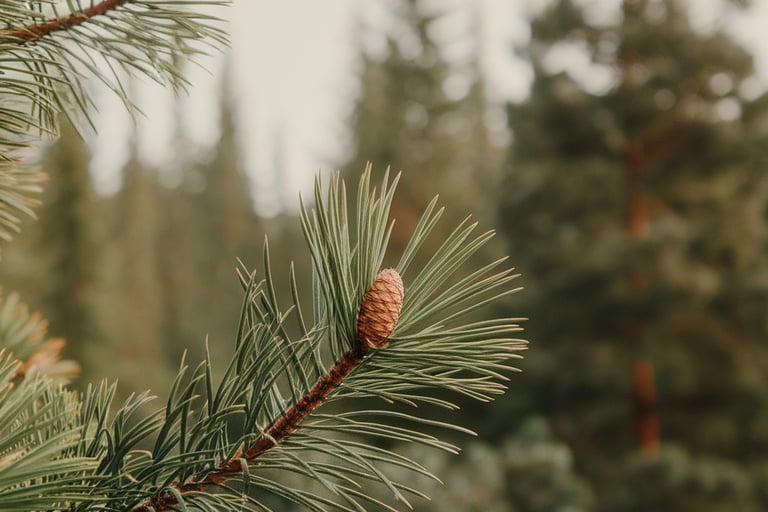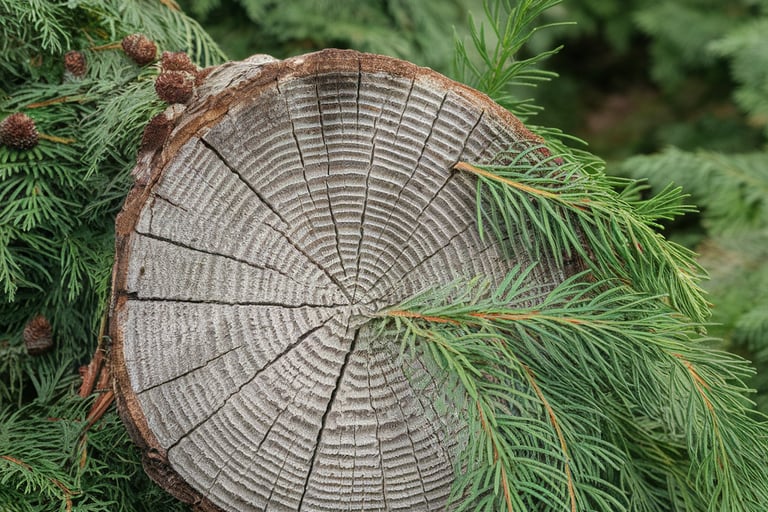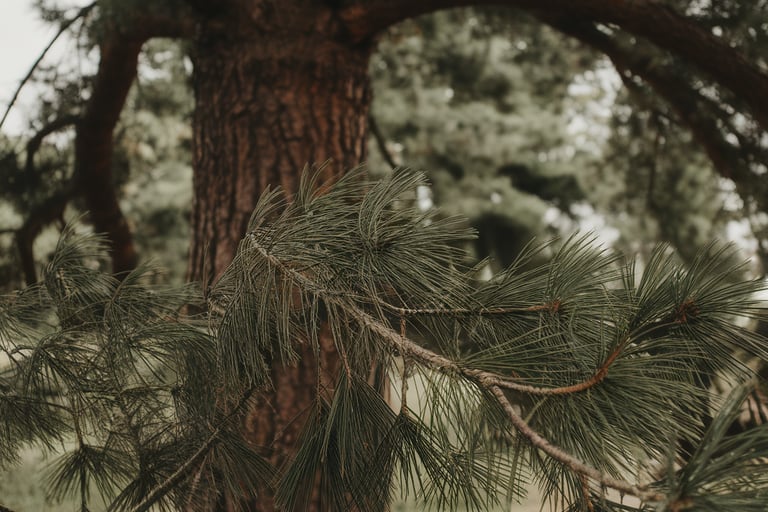
Essential Tools for Proper Tree Pruning in Vancouver: A Professional Guide to Year-Round Tree Care
Discover the must-have tree pruning tools for Vancouver's unique climate and tree species. Learn professional techniques and seasonal timing for optimal tree maintenance.
2/8/20257 min read
As a professional arborist with over 15 years of experience maintaining Vancouver's diverse urban forest, I've learned that having the right tools for tree pruning isn't just about making clean cuts – it's about understanding our unique coastal climate and local tree species. In Vancouver's wet climate, where we deal with everything from towering Western Red Cedars to delicate Japanese Maples, proper tool selection and maintenance become crucial for tree health and longevity.
Why Proper Tools Matter in Vancouver's Climate
Vancouver's unique climate presents specific challenges for tree maintenance. With our wet winters and increasingly dry summers, trees in our region require careful attention and precise pruning techniques. The high moisture levels we experience from October through March make our trees particularly susceptible to fungal infections if cuts aren't made cleanly with proper tools. According to the Vancouver Park Board's Urban Forest Strategy, our city's trees face unique pressures that make proper maintenance essential.
Professional-Grade Hand Pruners: Your First Line of Defense
When it comes to basic pruning tasks in Vancouver gardens, a high-quality pair of hand pruners (secateurs) is indispensable. For our local species like Vine Maples and Mountain Ash, which require regular maintenance, I recommend bypass pruners rather than anvil-style ones. The Felco F-2 Classic Manual Hand Pruner has been my go-to tool for decades, particularly effective on branches up to 1 inch (2.5 cm) in diameter.
The wet Vancouver climate means your pruners need to be:
• Corrosion-resistant
• Easy to clean and disinfect
• Capable of making precise cuts even in damp conditionsLoppers: Essential for Medium-Sized Branches
For Vancouver's larger ornamental trees and native species, a robust pair of loppers is crucial. When dealing with our local Bitter Cherry or Pacific Dogwood trees, you'll need loppers that can handle branches up to 2 inches (5 cm) in diameter. The extra leverage provided by loppers is particularly important when working with our region's dense, moisture-rich wood.
Pruning Saws: Tackling Vancouver's Larger Trees
In our region, where Western Red Cedars and Douglas Firs dominate many landscapes, a quality pruning saw becomes essential. The Silky Gomtaro 300mm Professional Pruning Saw has proven invaluable for tackling larger branches, especially during our primary pruning season between November and February. The saw's design helps prevent rust – a crucial feature in Vancouver's wet climate.
Pole Pruners: Reaching Vancouver Heights Safely
Given the impressive height of many Vancouver trees, particularly in areas like Shaughnessy or West Vancouver where mature gardens are common, a reliable pole pruner is essential. When selecting a pole pruner, consider our local challenges:
Height Requirements for Local Species
Most of Vancouver's native trees can grow quite tall, requiring pole pruners with extended reach. The ARS Professional Telescopic Pole Pruner, extending up to 20 feet, has served me well in maintaining both native and ornamental trees throughout the Lower Mainland.
Seasonal Tool Considerations for Vancouver's Climate
Understanding when and how to use your pruning tools in Vancouver's distinct seasons is crucial for optimal tree health. According to the UBC Botanical Garden's maintenance guidelines, our mild but wet winters and increasingly warm summers require different approaches to tool selection and maintenance.
Winter Pruning Equipment
During Vancouver's wet season (November through March), your pruning tools need extra attention. The constant moisture can lead to rust and deterioration if not properly maintained. When working with deciduous trees like Big Leaf Maples or Paper Birch during their dormant period, I recommend:
Professional Tool Maintenance in Wet Conditions
Keeping your tools in top condition during Vancouver's rainy season is crucial. After each use, thoroughly dry your equipment and apply a protective coating of natural oil. The Stanley Rust Preventative Solution has proven effective in our coastal climate. Store tools in a dry, well-ventilated space – crucial advice for local gardeners dealing with our high humidity levels.
Summer Pruning Toolkit
As Vancouver's summers become increasingly dry, different tools and techniques become necessary. When pruning during the growing season, particularly for flowering trees like our local Pacific Dogwoods or ornamental Cherry trees, lighter tools with precise cutting capabilities are essential.
Specialized Tools for Vancouver's Native Species
Western Red Cedar Maintenance
Our iconic Western Red Cedars require specific tools due to their unique growth patterns and resinous wood. When pruning these magnificent trees, particularly in areas like Pacific Spirit Regional Park or private Vancouver properties, I rely on specialized equipment designed for resinous woods.
The Felco 211-60 Pruning Saw with its hard chrome-plated blade has proven exceptional for dealing with cedar's sticky sap while maintaining clean cuts. This is particularly important as poor cuts on Western Red Cedars can lead to die-back, a growing concern in our changing climate according to Vancouver's Urban Forestry Department.
Japanese Maple Care
For Vancouver's numerous Japanese Maples, which require exceptionally precise pruning, I recommend using smaller, more delicate tools. These ornamental trees, particularly prevalent in areas like VanDusen Botanical Garden and many Vancouver residential gardens, need careful attention to detail.
Safety Equipment for Vancouver Conditions
Working in our wet climate requires additional safety considerations. Essential safety equipment includes:
Professional-Grade Safety Gear
When pruning in Vancouver's varied conditions, proper safety equipment becomes even more crucial. The Petzl Vertex Vent Arborist Helmet has proven invaluable during our wet seasons, offering excellent ventilation while maintaining safety standards.
Weather-Specific Considerations
Our frequent rain requires waterproof gear that doesn't compromise mobility. The Arbortec Breatheflex Pro Chainsaw Pants provide excellent protection while allowing the flexibility needed for precise pruning work in our local conditions.
Tool Sanitization in Vancouver's Climate
Given our humid environment's propensity for fungal growth, proper tool sanitization is crucial. The Pacific Northwest Plant Disease Management Handbook recommends specific sanitization protocols for our coastal climate. I keep a solution of 70% isopropyl alcohol readily available for cleaning tools between trees, particularly important when working with species susceptible to diseases common in our region.
Professional Techniques for Vancouver's Tree Species
Drawing from extensive experience working with Vancouver's diverse urban forest, I've developed specific techniques for our local species. The methods used in drier regions simply don't apply to our unique coastal environment. Let's explore the professional approaches that work best in our region.
Timing Your Pruning Work
Vancouver's climate creates distinct windows for optimal pruning. Working with the BC Landscape & Nursery Association's guidelines, I've found that timing is crucial for different species:
Deciduous Trees
For Vancouver's native deciduous trees like Bigleaf Maples and Red Alders, the ideal pruning window is during the dormant season, typically from late November through February. This timing allows for better wound healing and reduces the risk of fungal infections common in our wet climate.
Evergreen Species
Our native conifers, including Western Red Cedar and Douglas Fir, can be pruned year-round, but I prefer early spring before the new growth appears. This approach has proven most successful in maintaining tree health across Vancouver's West Side and North Shore properties.
Professional Tips for Common Vancouver Trees
Cherry Trees
Vancouver's famous cherry trees require special attention. When pruning these iconic trees, which draw thousands of visitors during the Vancouver Cherry Blossom Festival, timing is crucial. The best period for pruning is immediately after flowering, usually in late April or early May. According to the Vancouver Cherry Blossom Festival's tree care guidelines, this timing helps prevent silver leaf disease, a common issue in our wet climate.
Arbutus Trees
Our native Arbutus trees, particularly those found in areas like Spanish Banks and Point Grey, require minimal pruning. When necessary, work should be done during dry periods in late summer to minimize the risk of fungal infections that are prevalent in Vancouver's maritime climate.
Emergency Pruning Considerations
Sometimes, especially during Vancouver's winter storms, emergency pruning becomes necessary. The City of Vancouver's Urban Forestry Division recommends immediate attention to storm-damaged trees to prevent further damage and promote proper healing.
Proper tree pruning requires both expertise and the right tools. While this guide provides comprehensive information, Vancouver's unique urban forest often presents challenges that require professional attention. For complex pruning needs or if you're unsure about the best approach for your trees, consider consulting with a certified arborist who understands our local conditions.
Frequently Asked Questions
Q: When is the best time to prune fruit trees in Vancouver?
A: For most fruit trees in Vancouver's climate, late winter to early spring (February to March) is ideal. This timing reduces the risk of fungal diseases common in our wet environment and promotes strong spring growth.
Q: How often should I sanitize my pruning tools in Vancouver's climate?
A: In our humid environment, tools should be sanitized between each tree and at the end of every pruning session. This is particularly important during the wet season (October to March) when fungal diseases are most active.
Q: What's the best way to store pruning tools in Vancouver's damp climate?
A: Store tools in a dry, well-ventilated area. Apply a rust-preventative oil monthly and ensure tools are completely dry before storage. Consider using a dehumidifier in your storage area during winter months.
Q: How do I know if my tree needs professional pruning?
A: Consider professional help if your tree shows signs of disease, has dead branches larger than 5cm in diameter, or requires pruning near power lines. The BC Certified Arborists Directory can help you find qualified professionals.
Q: What are the local regulations regarding tree pruning in Vancouver?
A: Vancouver has specific bylaws regarding tree maintenance. Check the City of Vancouver's Protection of Trees Bylaw before starting any major pruning work, especially on trees over 20cm in diameter.
Remember, proper tree care is an investment in Vancouver's urban forest. Using the right tools and techniques not only ensures the health of your trees but contributes to the overall beauty and sustainability of our city's green spaces. To learn more about Vancouver landscaping check our blog out.






Contact
Blossomscaping@gmail.com
+1-604-339-9217
© 2024. All rights reserved.
Where we service
3158 W 34th Ave, Vancouver, BC V6N 2S2
UBC - Cambie - Dunbar - West Vancouver - North Vancouver - West Point Grey - Shaughnessey - Richmond - Kerrisdale - South Vancouver - East Vancouver - Kitsilano - Burnaby - Mount Pleasant - Oakridge - Arbutus Ridge - Marpole - Southlands - Victoria-Fraserview


Proudly Servicing Vancouver, British Columbia
What we service
